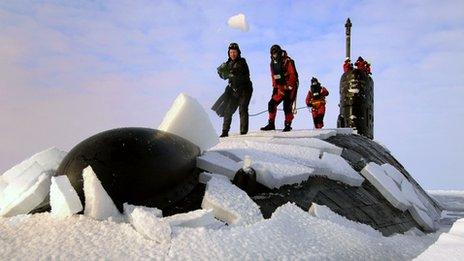Voyage traces stirred-up Arctic heat
- Published

The research vessel spent a month in and around the Beaufort Sea
Oceanographers have gathered fresh evidence that turbulence in the Arctic Ocean, driven by the wind, is stirring up heat from the depths.
As dwindling ice exposes more water to the wind, this turbulence could close a vicious circle, accelerating the melt.
The research team has measured heat rising from below that matches what is arriving from the autumn sun.
They spoke to the BBC by satellite phone as their month-long voyage headed back into port.
Although their findings are preliminary, the "ArcticMix, external" team has been taken aback by what they've seen in the raw data.
"The strength of heat coming up from below the surface has been as strong as the heat coming down from the Sun," said the mission's chief scientist, Jennifer MacKinnon, of the Scripps Institution of Oceanography at the University of California San Diego.
"Admittedly, the days are getting short here, and so the sunlight is not incredibly strong at this latitude. But still, that very rarely happens; that's kind of blown us all away."
Scenes from the ArcticMix voyage (footage courtesy of Faith Haney, Transect Films)
The source of that deep heat is a layer of warm water that is saltier - and therefore denser - than water at the surface.
"There's a reservoir of heat in the Arctic Ocean, well beneath the surface, that historically - when there's been a lot of ice - has been fairly quiescent," Dr MacKinnon explained. "It's just been sitting as a warm, salty puddle beneath the surface."
Now that shrinking sea ice is exposing more water to the air, scientists are worried that this warm, salty puddle might get stirred upwards.

Dawn in the Beafort Sea, and the Sikuliaq steams through newly forming "grease" ice
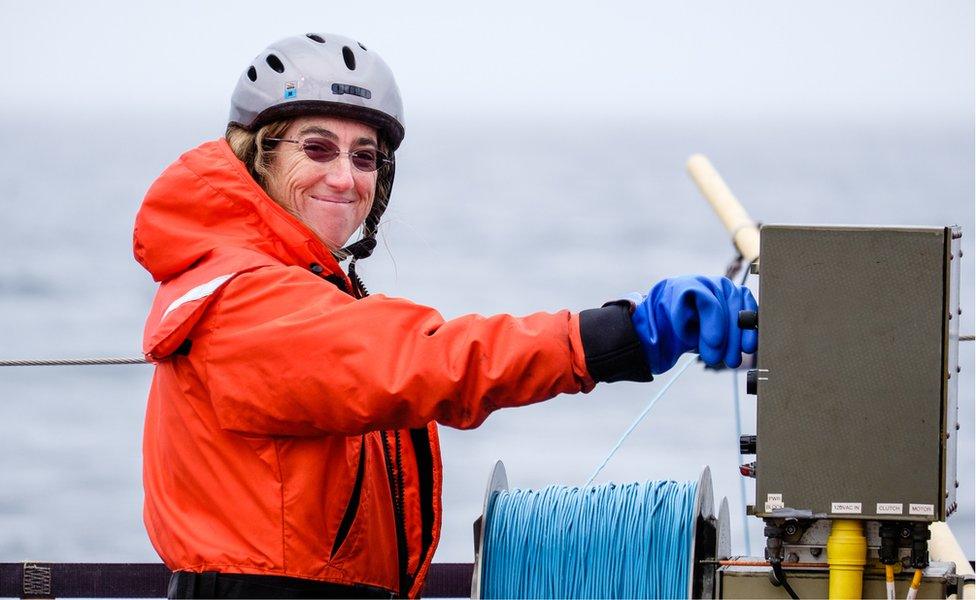
Chief scientist Jen MacKinnon manning the winch
And, indeed, Dr MacKinnon's team has detected heat being brought to the surface by surprisingly strong eddies - which they studied in detail using a gadget that looks like "a torpedo with a record-player needle at the front".
Matthew Alford, the project's chief investigator, explained how this "microstructure profiler" - developed in the University of Washington's Applied Physics Laboratory - works when it is dropped into the sea.
"When it encounters very, very small currents of turbulence, the needle just gets deflected slightly - exactly as it would if it was travelling over a record," said Dr Alford, also from the Scripps Institution.
"[These tools] are allowing us to get a clearer view of not only the 3D structure of these eddies, but also really directly measuring the heat flux out of the top of these eddies, and into the bottom of the ice."
Some of these currents were bringing water as warm as 6C to depths shallower than 50m; these are even more dramatic disturbances than the team had expected.
"The strength of [these currents] has been incredible," Dr MacKinnon said. "We now need to disentangle what the contribution of that process is to the multi-year, inexorable decline of the sea ice."
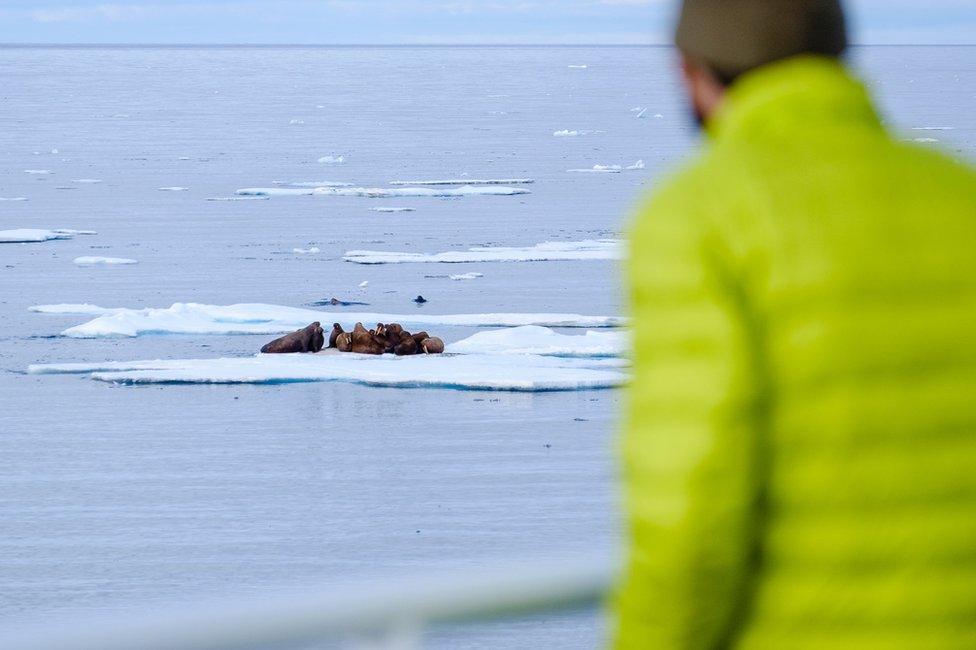
Walruses were among the wildlife the researchers spotted on the trip...

...and one day a puffin made itself at home
The expedition reached its conclusion on Saturday, when the US National Science Foundation's research vessel the Sikuliaq returned to port in Alaska.
Among the team's other toys were a "Swims" (shallow water integrated mapping system) which could be trailed behind the boat to take continuous measurements of temperature, depth and conductivity, and a "bow chain" to probe the water in front of the boat.
"We're interested in the structures of the ocean, not in the ocean after we just rammed through it with a huge 261ft (80m) ship," explained Dr Alford. "So the idea is to dangle sensors in front of it, and have them sample the unperturbed ocean. That's been showing us some very nice structures in the upper 20m or so of the ocean."
They also deployed a stationary mooring: a heavy weight chained to a float, with an automated profiler that crawled up and down the chain collecting data until the team came back to pick it up.
"It was exactly where we left it, which was amazing," Dr Alford said. "Sometimes these things go drifting or get dragged by fishing boats… This was a very boring recovery of our mooring and that's the way we like it."
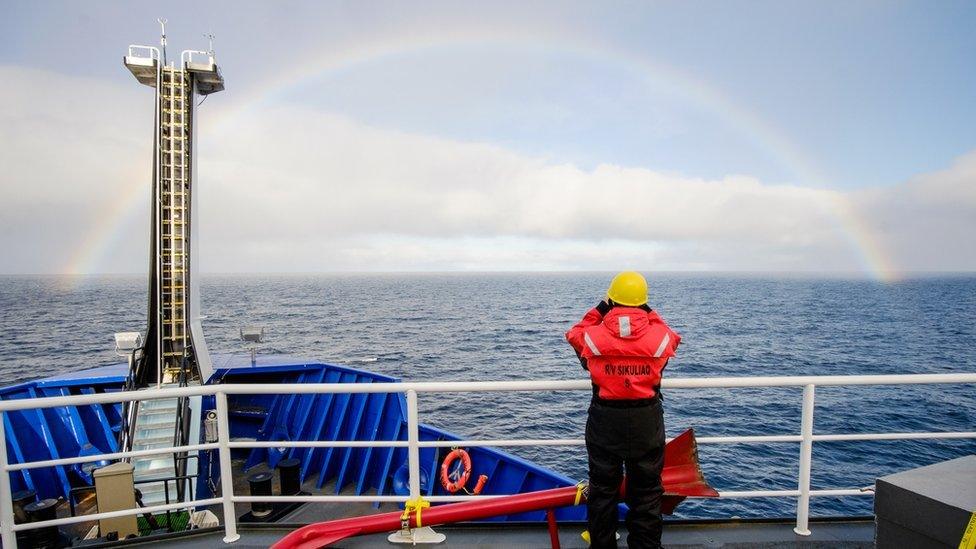
From wild weather to walruses, the team saw some breathtaking sights during the trip

Science never sleeps: Dr Alford at work on board
The researchers encountered walruses, puffins and a lone polar bear during their weeks at sea. Dr MacKinnon said the wildlife count was lower than usual. "It's actually been super-quiet up here."
Quiet - but fierce. "It's been chilly. There's been a number of nights when people have been out working on deck, when it's snowing, it's windy, and it's maybe -5C on board."
Dr Julienne Stroeve, an arctic expert at the US National Snow and Ice Data Centre, said the new results were valuable and interesting.
"I think it is quite important to understand this type of mixing of warmer ocean waters at depth with the sea ice," she told the BBC.
It will be crucial, Dr Stroeve added, to quantify exactly how much heat is reaching the ice and how much melting it has caused.
"In 2007 more than 3m of bottom melt was recorded by [an] ice mass balance buoy in the region, which was primarily attributed to earlier development of open water that allowed for warming of the ocean mixed layer. But perhaps some of this is also a result of ocean mixing."
Follow Jonathan on Twitter, external
- Published24 September 2015

- Published4 May 2015
- Published3 May 2015
- Published19 March 2015
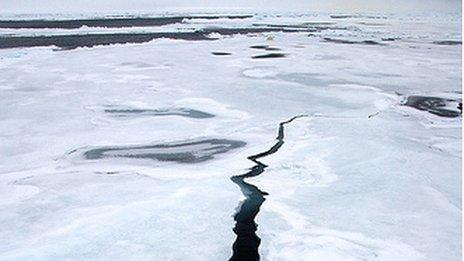
- Published29 May 2014
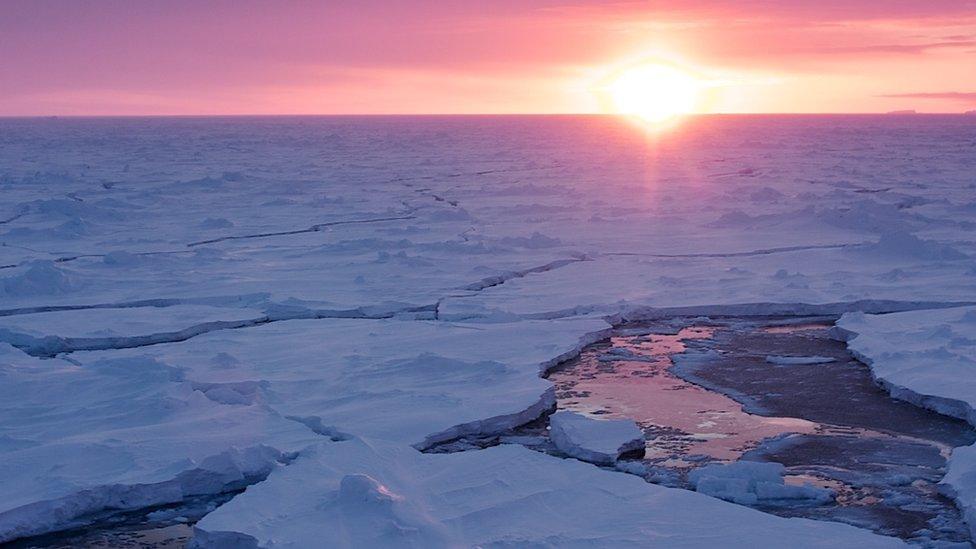
- Published19 May 2014
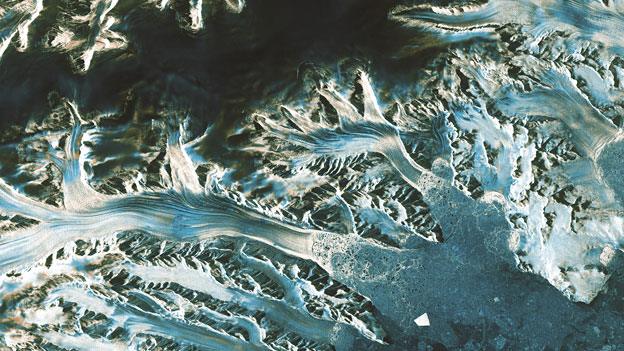
- Published6 May 2013
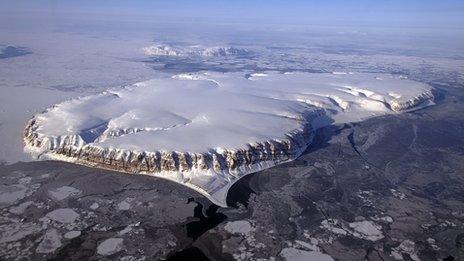
- Published6 September 2012

- Published23 February 2012
